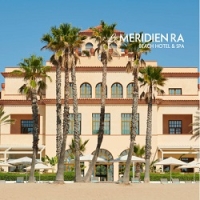
Their mild climate throughout the whole year, varied scenery, natural and cultural heritage, and enviable cuisine are just some of the reasons that make the Rias Baixas an unrivalled destination for corporate incentive programmes.
There are many wineries that offer the possibility of combining professional meetings in an exclusive setting with magnificent tours of their facilities and vineyards, wine tasting courses, wine-pairing dinners and other recreational activities that make this kind of trip a great success with special customers or top employees.
Adega Condes de Albarei (Castrelo), Agro-Bazan (Tremoedo), Bodegas Agnus (Simes), Lagar de Pintos (Ribadumia), Regina Vinarum (Lugo), and Bodegas D’Altamira (Santa Eulalia) figure among some of the region’s most prestigious wineries that have incorporated facilities for business meetings in perfect harmony with the fresh and youthful character of their wines.
The world-renowned Albariño wines are the most characteristic of this region of Northwestern Spain, and the perfect accompaniment to the quality fish and seafood dishes and exquisite culinary creations of this part of the Galician coast, which like its wines are justly famous the world over.
The Ethnographic Wine Museum, housed in a former 18th century rectory in Cambados, which also contains the Pazo Torrado, headquarters of the Wine Route Museum, is the perfect place to taste and savour the region’s wines. Likewise, the Sanxenxo Wine Museum and the Parador of Cambados, occupying the Pazo de Bazan mansion are just two of the region’s unique and exclusive meeting and event venues, which are guaranteed to leave a lasting impression on attendees.
But the Rias Baixas are not just a fabulous destination for their variety and quality of their wine-related meeting facilities and tourist attractions, since they also offer visitors a broad variety of leisure activities. Adventure and nature enthusiasts will be seduced by the unique scenery of the rías or estuaries, natural parks, salt marshes and the incomparable Cies Islands, part of the National Park of the Atlantic Islands, a paradise of calm, crystalline waters, flora and fauna, and an excellent destination for practising air sports.
Hiking trails, rafting, catamaran trips, water skiing, sailing, surfing, and diving are just some of the activities geared to high-risk sports enthusiasts in these ocean-washed lands. However, those visitors looking for peace and quiet can choose from a broad range of superb watering places, spas and thalassotherapy centres. The resorts and beaches of the Rias Baixas figure among the many attractions afforded by this region, where golfing, fishing and hunting are only a few of the leisure activities on offer. The press houses, as well as many other expressions of the region’s historic, artistic and cultural heritage, bearing witness to the many cultures that have left their mark here, are a must for all visitors. The hermitage and fortress of A Lanzada, built in 952 in Sanxenxo, the Church of San Salvador, or the mills of the River Armenteira, in the town of Meis, and those of Rande and Batan, in Ribadumia, are just a few examples of this splendid heritage.
Rias Baixas, the Cradle of Albariño
It was the Romans who first began to cultivate vineyards in these beautiful lands more than 20 centuries ago. Afterwards, the monasteries were responsible for disseminating wine culture and grape cultivation techniques. And it was precisely in Southern Galicia where the largest number of grape varieties began to be produced, above all the Albariño grape. In order to find the cradle of this variety, it is necessary to pay a visit to Cambados, a beautiful locality on the banks of the Arousa estuary, in the Val Do Salnés (Pontevedra). The area has 13 wineries open to the public, which conform the Cambados Wine Route regarded as the most complete in the region.
This variety of grape has such deep roots in this land that it is here that the Albariño Festival is held yearly during the first weekend of August. The fact is that unique wines with their own characteristics are produced from this variety in each area of the Rias Baixas. For instance, the Albariño of Val do Salnes is a fresh wine with a melon flavour that remains on the palate; that of Rosal tends to taste slightly sweet, with a peach aftertaste; whereas the Condado de Tea Albariño has more body and less fruit.




